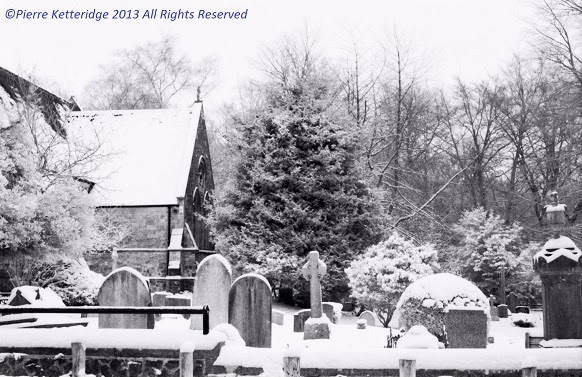Possibly the most rewarding form of photography is macro photography - close-up, detailed telephoto images, capturing the world of the miniature and rendering it large scale for all to see.
Here's an image I took last week of a bumblebee on my rear deck, the first I've seen this year:
Wildlife is a great subject for macro photography, but to get sharp images you need a fast lens, wide aperture and fast shutter speed (if your subject is moving). And stability, to prevent camera shake - so a tripod would seem mandatory. However, I find that macro opportunities arise at the most unpredictable times, and you never have the right kit to hand. None of the macro photographs on this page were taken on a tripod - I compensated by ensuring that the shutter speed, in one hundredths of a second, exceeded the maximum focal length of the lens in millimetres. So, in the case of the bumblebee, I was shooting with a Tamron 70-300mm telephoto lens in macro mode, and set my shutter speed to 1/320th of a second. I shot in raw format, so that I could adjust exposure in post production as necessary.
Often I just have a kit lens to hand, but you can still obtain decent macro images with these. Here's a young newt we found and looked after for a couple of days, before releasing him into the brook at the bottom of the garden:
A bit fogged, but it was shot through the side of a plastic tank with an 18-55mm kit lens. As was my son's "rainbow pilot", here:
Using a wide aperture decreases the depth of field, leaving one small plane of the focal length in focus, and creating a pleasing "bokeh" effect elsewhere in the image (normally the background).
I've experimented with "repurposing" lenses for macro photography. For example, I've taken a fixed-lens Kowa camera and removed the f/1:1.8 lens and fixed it on an EF mount to fit my Canon. This involved destroying the armature that control the aperture and focusing ring, so I had to wind the lens fully open, and focus by moving the camera nearer or further away from my subject. The focal length is now at 9cm from the sensor, with a depth of field of 1.5 cm. The results of my "McGuyvering", the frankenstein lens, isn't exactly pretty, with all the Superglue, Araldite and rubber glue holding it together, but the results have been good.
Here, a couple of spiders, and my son's Triops:
Of course, you can find lots of inanimate subjects for macro photography, and then you don't have to worry so much about stability*. One of my hobbies is palaentology, and I have amassed quite a collection of fossils, primarily Trilobites. This montage is called Stone Eyes, after the fact that these prehistoric creatures are the only known animals to have, in life, grown their eyes from calcite, much as crystals form their geometric patterns. I hope you enjoy them.
*A tip: get an M6 bolt and attach a non-flexible cord, cut to a length of the distance from the floor to your eyeline. Attach a metal plate or spanner to the other end. Screw the M6 bolt into the tripod mount of your camera. Step on the metal plate or spanner and lift the camera until the cord is taut. Voila! You have a portable tripod you can roll up and put in your pocket!






























































